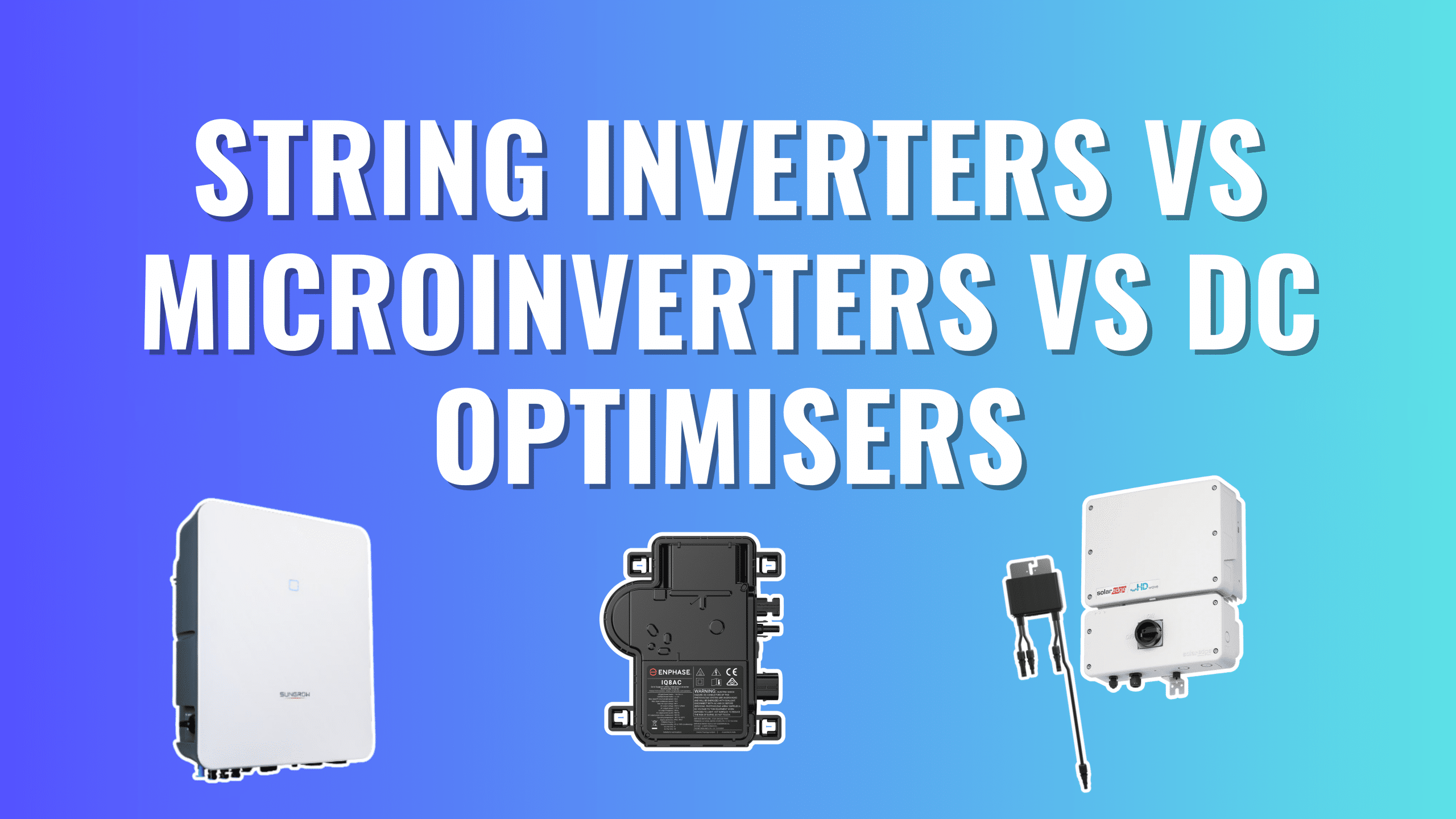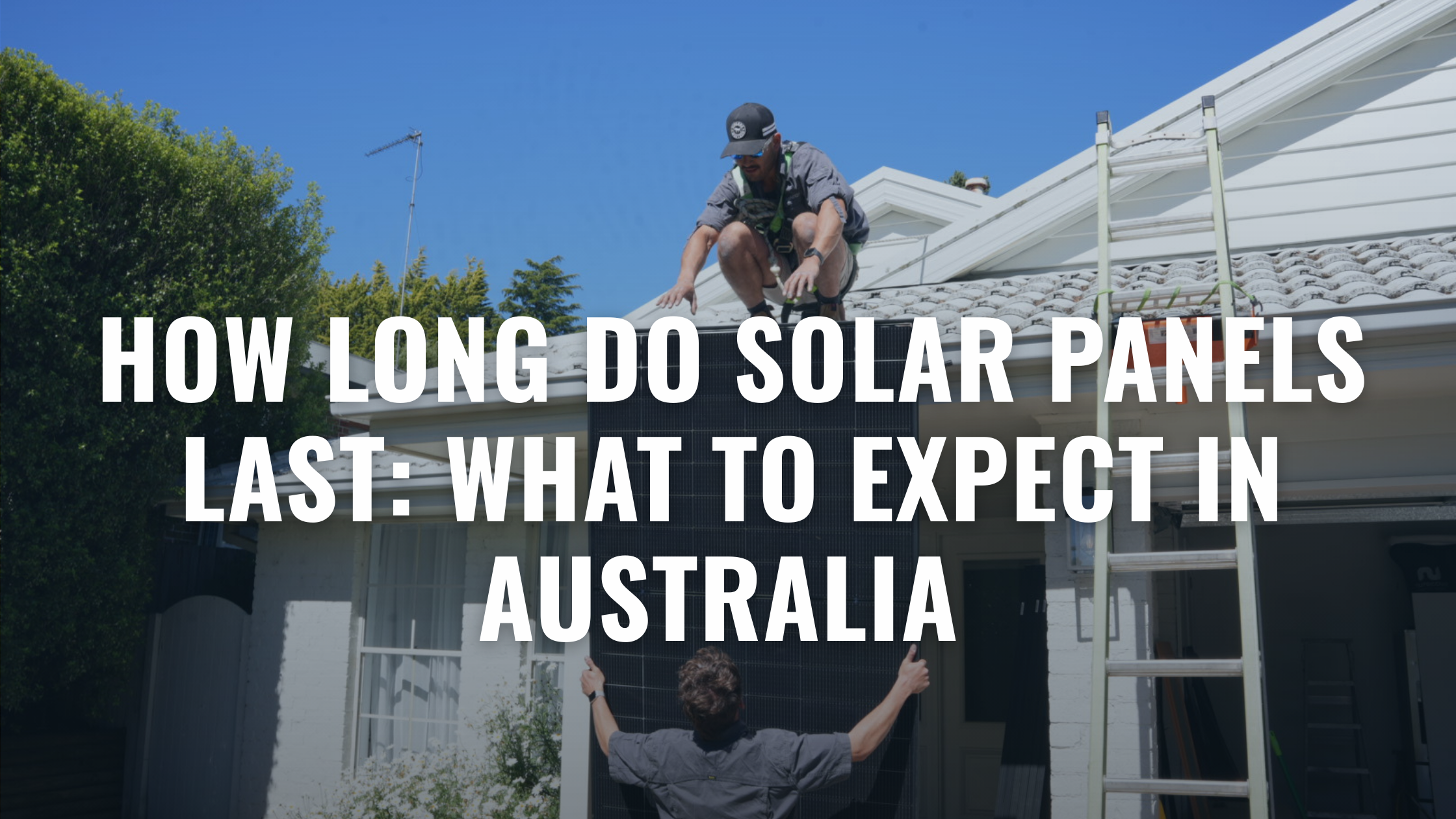
Written by Donna Wentworth
Last Updated: August 28, 2025
String Inverters vs Microinverters vs DC Optimisers
Are you considering installing a solar system but feeling overwhelmed by the different inverter options? You’re not alone. Many homeowners ask us about the differences between these systems and why they should choose one over the other. With years of experience in installing solar solutions at Lenergy, we’re here to help you understand all your options.
At Lenergy, we provide all three types of inverters because we recognise that every household has unique needs and requirements.
In this article, we’ll compare String Inverters, DC Optimised systems, and Microinverters—looking at their efficiency, installation process, costs, and suitability for various situations. Picking the right inverter is essential to maximise your solar system’s performance and value.
By the end, you’ll have a clear understanding of which system best fits your needs, ensuring optimal efficiency and long-term savings from your solar investment.
- What are String Inverters?
- What are DC Optimisers?
- What are Microinverters?
- How are DC Optimisers, String inverters and Microinverters Different?
- Cost Comparison of a String inverter, Microinverter and DC optimisers
- Safety and Reliability

What are String Inverters?
String inverters are the most common type in the solar energy market and are known for their affordability.
How they work:
All of your solar panels are connected in a “string” (similar to Christmas lights). The combined DC electricity flows to a single central inverter, which converts it into usable AC power for your home.
Advantages of String Inverters:
- Cost-effective: Generally, lower-priced than other inverter types, making them attractive for both small and large systems.
- Simple installation: Fewer components mean quicker, straightforward setup.
- High efficiency in ideal conditions: Perform well when sunlight is consistent and shading is minimal.
Disadvantages:
- Shading sensitivity: Any shading, dirt, or damage on a single panel can significantly reduce the output of the entire string.
- Limited monitoring: Usually lacks detailed panel-level performance data, making issue detection more difficult.
- Design restrictions: Require specific panel layouts and orientations, which can limit flexibility—especially on roofs with multiple angles or obstructions.
Best Use Cases:
- String inverters are ideal for open spaces with little or no shading. These include homes with simple roof designs that are unaffected by shading, large commercial rooftops or ground-mounted solar farms.
- Simple Panel Layout. They work well for homes with very simple roof layouts where the solar panels only face up to three separate directions.
String inverters are reliable and cost-effective for many solar installations. But, shading and layout can greatly hurt their performance.
Imagine a large, open roof with no shading, this is where string inverters thrive.

What are DC Optimisers?
DC optimisers are advanced devices attached to each solar panel, working alongside a central string inverter.
How they work:
Each panel is equipped with an optimiser that conditions its power before sending it to the central inverter. This setup improves overall system performance by optimising each panel individually.
Advantages:
- Improved shading performance: Reduce shading impacts by ensuring each panel operates at its best.
- Panel-level monitoring: Accurate detection of issues at the individual panel level, simplifying maintenance.
- Enhanced energy yield: Increase overall solar energy harvest, especially in partially shaded or multi-orientation rooftops.
Disadvantages:
- Higher upfront cost: Adds to the initial investment compared to a basic string inverter system.
- Longer installation time: Slightly more complex installation process with additional components.
Best Use Cases:
- DC optimisers are for places where some panels may be slightly shaded at different times of the day. This includes residential rooftops with chimneys, trees, or other obstructions that may shade sections of the roof.
- Variable Panel Orientations are well-suited for roofs with many angles or orientations as each panel can be optimised separately.
DC optimisers offer a great balance of cost and performance. They boost the efficiency and reliability of solar systems in less-than-ideal conditions. They provide great benefits in scenarios where shading or panel orientations would otherwise reduce the system’s overall output.

What are Microinverters?
Microinverters are small devices mounted directly on each solar panel, converting DC to AC at the panel level.
How they work:
Every panel has its own microinverter, which operates independently of the others, converting the power right at the source.
Advantages:
- Maximum efficiency: Ensures each panel operates at its highest potential, especially useful in shaded or complex roof layouts.
- Ideal for shaded conditions: Shade on one panel doesn’t affect the others.
- Detailed monitoring: Track performance at the panel level for precise troubleshooting.
- Enhanced safety: No high-voltage DC present in the system, reducing fire risk.
Disadvantages:
- Higher initial cost: More microinverters mean a higher upfront expense.
Best Use Cases:
- Complex Roof Designs: Microinverters are ideal for installations with multiple roof angles and orientations, as they ensure each panel performs optimally regardless of its position.
- Shaded Locations: They are perfect for areas where shading varies throughout the day, as each panel operates independently without impacting the rest of the system.
- High-Performance Monitoring: For those who value detailed performance data, microinverters provide comprehensive monitoring at the panel level, making them a great choice.
Microinverters are very efficient and flexible. Microinverters are an excellent choice for residential and commercial solar installations with varying conditions. Their ability to optimise each panel independently and provide detailed monitoring ensures maximum energy production and system reliability.

How are DC Optimisers, String inverters and Microinverters Different?
Choosing between String Inverters, DC optimisers, and Microinverters involves evaluating many key factors. These include efficiency, performance, installation, maintenance, cost, and safety.
Here’s a detailed comparison to help you understand the differences:
Efficiency and Performance:
- String inverters are efficient in ideal conditions. But, they suffer performance drops if even one panel is shaded or malfunctioning. The output of the whole string is limited by the weakest panel. It can greatly reduce efficiency.
- DC optimisers boost efficiency. They do this by letting each panel operate at its best. They reduce the impact of shading on a single panel. They do this by optimising each panel independently. This results in better overall system efficiency in varied shading conditions.
- Microinverters offer the highest efficiency. They convert DC to AC at the panel. Each panel operates alone. If one panel is shaded or fails, it does not affect the others. This results in superior performance, particularly in installations with mixed shading or orientations.
Installation and Maintenance:
- String Inverters: These are the simplest and quickest to install due to fewer components. Maintenance is also straightforward, as there is only one central inverter to manage.
- DC Optimisers: Have more time-consuming installations. This is due to the extra components attached to each panel. Maintenance can be more involved. But, the panel-level monitoring makes it easy to find and fix specific issues.
- Microinverters: Much like the DC Optimisers, are more time-consuming to install. This is because each panel requires its own microinverter. However, this allows for easier maintenance and troubleshooting at the individual panel level.
Cost Comparison of a String inverter, Microinverter and DC optimisers
– 6.6 kW String Inverter system at Lenergy is: $6,992
– 6.6 kW DC Optimiser inverter system at Lenergy is: $8,110
– 6.6 kW Microinverter system at Lenergy is: $10,279
There is a notable price difference between string inverter systems and microinverter systems. Therefore, it is crucial to have a system that is specifically tailored to your needs.
Cost Considerations:
- String inverters: Have the lowest upfront cost. This makes them a good option for budget-conscious installations. However, potential performance losses due to shading can impact long-term savings.
- DC Optimisers: Higher initial cost than string inverters due to the added optimisers. The better efficiency and performance in shaded conditions can justify the additional expense over time.
- Microinverters: The highest initial cost due to the need for multiple inverters. The higher upfront cost can be offset by better efficiency, performance, and monitoring. This is especially true in challenging installations.
Safety and Reliability
String Inverters are reliable but considered less safe as high-voltage DC electricity runs through the system. Performance issues with a single panel can affect the entire string. Both String and DC optimisers have Arc Fault Detection Devices to minimise their risk.
DC Optimisers increase safety by reducing the impact of shading and managing voltage at the panel level. They offer better reliability through panel-level optimisation.
Microinverters provide the highest safety. They eliminate high-voltage DC electricity, reducing the risk of fires. Their independent operation of each panel ensures excellent reliability and safety.
Solar Inverters: Turning The ‘Current’ Situation Around
The most important takeaway is understanding your needs, your home’s capabilities, and your goals. This will help you avoid buying something unnecessary or unsuitable.
We get it, you’re probably not 7 feet tall with a perfect view of your roof. That’s why we can show you, in real time, any shading issues and discuss which option is best for your roof layout. Here’s a quick summary for you:
| Inverter Type | Cost | Performance with Shade | Panel Independence | Best For |
| String Inverter | Lowest | Poor (one panel affects all) | No | Unshaded roofs, same direction panels |
| Microinverter | Highest | Excellent | Yes | Shaded roofs, complex roof layouts |
| DC Optimiser | Mid-range | Good | Yes (to some extent) | Partial shading, slight mismatches |
With the above information in your arsenal, you can now understand why one inverter option may be suggested for you. Or know if you’re being led astray.
Still confused about which inverter is for you? Contact us today and we’d be more than happy to discuss your needs and match them with the right choice! Alternatively check out our recent blog on Which one is right for you.

